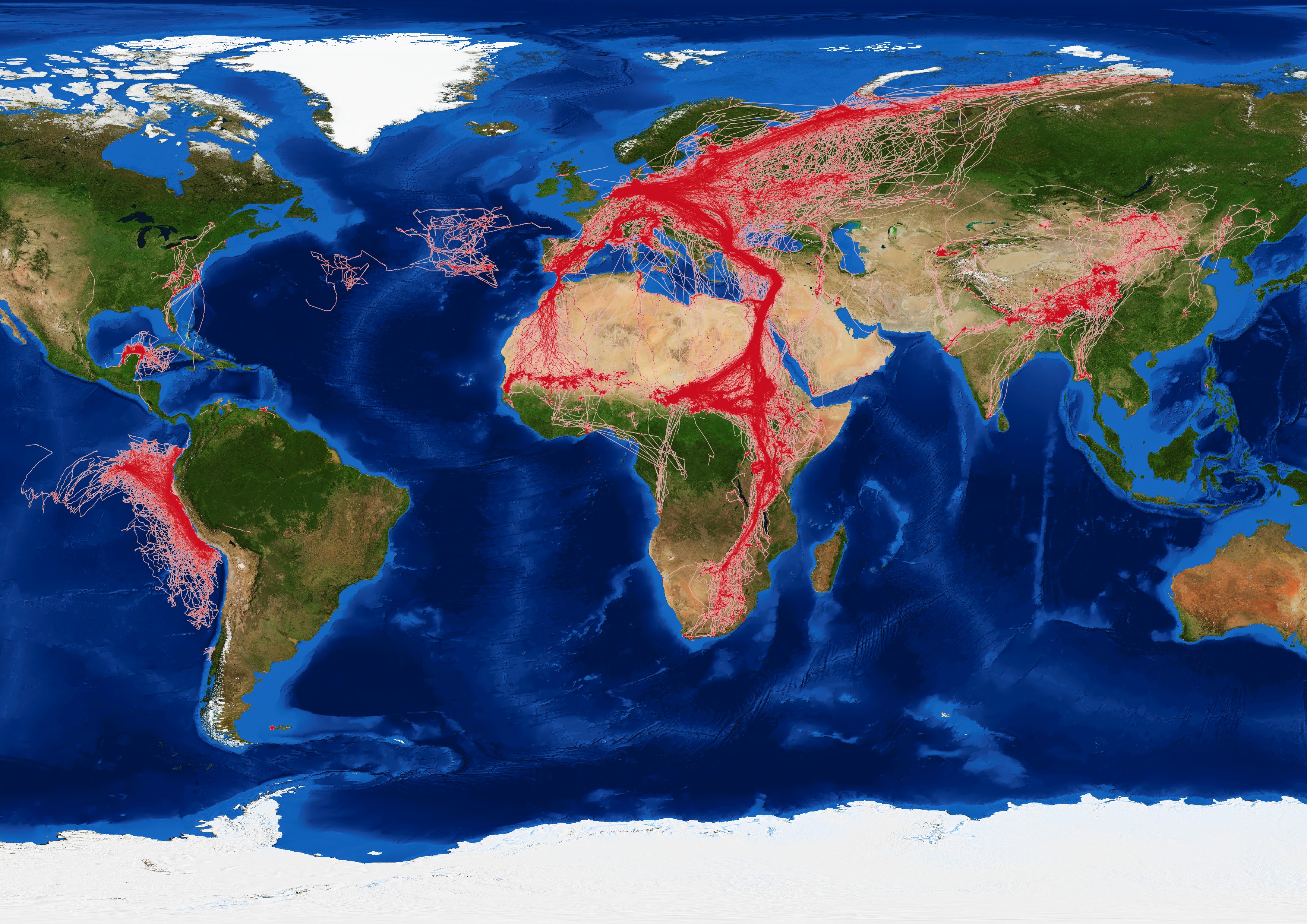
How the coronavirus measures impact wildlife
A research network with participation of the Konstanz Max Planck Institute of Animal Behavior and the University of Konstanz is investigating the impacts of the coronavirus lockdown on wildlife
Many countries around the world went into lockdown to control the spread of Covid-19. The new “COVID-19 Bio-Logging Initiative”, including researchers from the Senckenberg Society for Nature Research, the Max Planck Institute of Animal Behavior and the University of Konstanz, is investigating how animals are responding to reduced levels of human activity. Using mini-transmitters, the movements of several species have been traced before, during and after the coronavirus pandemic. In an article currently published in Nature Ecology & Evolution, the scientists explain how research during this devastating health crisis can inspire innovative strategies for sharing space on this increasingly crowded planet, with benefits for both wildlife and humans.
The past few months have shown that the coronavirus restrictions not only affected humans, but also had an effect on nature. There have been countless posts on social media over the past few months reporting unusual wildlife encounters. There not only seem to be more animals than usual, but there are also some surprising visitors: Pumas have been spotted prowling the streets of downtown Santiago, Chile, and dolphins recently showed up in untypically calm waters in the harbour of Trieste, Italy, and in a number of European cities more wildlife than usual has been spotted.
For other species, the pandemic may have created new challenges. For example, some urban-dwelling animals, like gulls, rats or monkeys, may struggle to make ends meet without access to human food. In more remote areas, reduced human presence may potentially put endangered species, such as rhinos or raptors, at increased risk of poaching or persecution.
Insights into the interaction between animals and humans
Brought about by the most tragic circumstances, this period of unusually reduced human mobility, which the article’s authors coined “anthropause”, can provide invaluable insights into human–wildlife interactions. In the current issue of the journal Nature Evolution & Ecology, the researchers argue that we cannot afford to miss the opportunity to chart, for the first time on a truly global scale, the extent to which modern human mobility affects wildlife.
To address this challenge, researchers recently formed the “COVID-19 Bio-Logging Initiative”. This international consortium will investigate animals’ movements, behaviour and stress levels, before, during and after Covid-19 lockdown, using data collected with nifty animal-attached electronic devices called “bio-loggers”.
The article’s lead author, Professor Christian Rutz, a biologist at the University of St Andrews, UK, and President of the International Bio-Logging Society, explains: “All over the world, field biologists have fitted animals with miniature tracking devices. These bio-loggers provide a goldmine of information on animal movement and behaviour, which we can now tap to improve our understanding of human–wildlife interactions, with benefits for all.”
Global picture of lockdown effects
The team will integrate results from a wide variety of animals, including fish, birds and mammals, in an attempt to build a global picture of lockdown effects. Dr Francesca Cagnacci, Senior Researcher at the Edmund Mach Foundation in Trento, Italy, and Principal Investigator of the Euromammals research network, says: “The international research community responded quickly to our recent call for collaboration, offering over 200 datasets for analysis. We are very grateful for this support.”
So, what do the scientists hope to learn? Dr Matthias-Claudio Loretto, a Marie Skłodowska-Curie Fellow at the Konstanz Max Planck Institute of Animal Behavior, explains that it will be possible to address previously intractable questions: “We will be able to investigate if the movements of animals in modern landscapes are predominantly affected by built structures, or by the presence of humans. That is a big deal.”
Professor Thomas Müller, wildlife researcher at the Senckenberg Biodiversity and Climate Research Centre and the Goethe University Frankfurt, adds: “Research teams in Europe, too, have fitted animals with transmitters and we can use the data to study, for example, wild cats, bears and deer.”
These insights will in turn inspire innovative proposals for improving human-wildlife coexistence, according to Professor Martin Wikelski, Director of the Konstanz Max Planck Institute of Animal Behavior and member of the Cluster of Excellence “Centre for the Advanced Study of Collective Behaviour” at the University of Konstanz. “Nobody is asking for humans to stay in permanent lockdown. But we may discover that relatively minor changes to our lifestyles and transport networks can potentially have significant benefits for both ecosystems and humans.”
Key facts:
- „COVID-19 Bio-Logging Initiative“: Research network investigates the effects of the coronavirus restrictions on wildlife at a global level.
- Current publication in the journal “Nature Ecology & Evolution”: Christian Rutz, Matthias-Claudio Loretto, Martin Wikelski, Francesca Cagnacci et al., COVID-19 lockdown allows researchers to quantify the effects of human activity on wildlife, comment in “Nature Ecology & Evolution”, 22 June 2020
DOI: 10.1038/s41559-020-1237-z
Link: https://www.nature.com/articles/s41559-020-1237-z - Participating institutions: University of St Andrews, UK, Senckenberg Society for Nature Research, the Konstanz Max Planck Institute of Animal Behavior, Cluster of Excellence “Centre for the Advanced Study of Collective Behaviour” at the University of Konstanz
Note to editors:
Images can be downloaded here: https://www.dropbox.com/sh/mcmsliy1o4s6q89/AABl1m8XxziWQOSufxNQD5H7a?dl=0
The pictures may be published exclusively in connection with the above mentioned research publication. As picture credits, please indicate the persons and institutions named in the file name.
